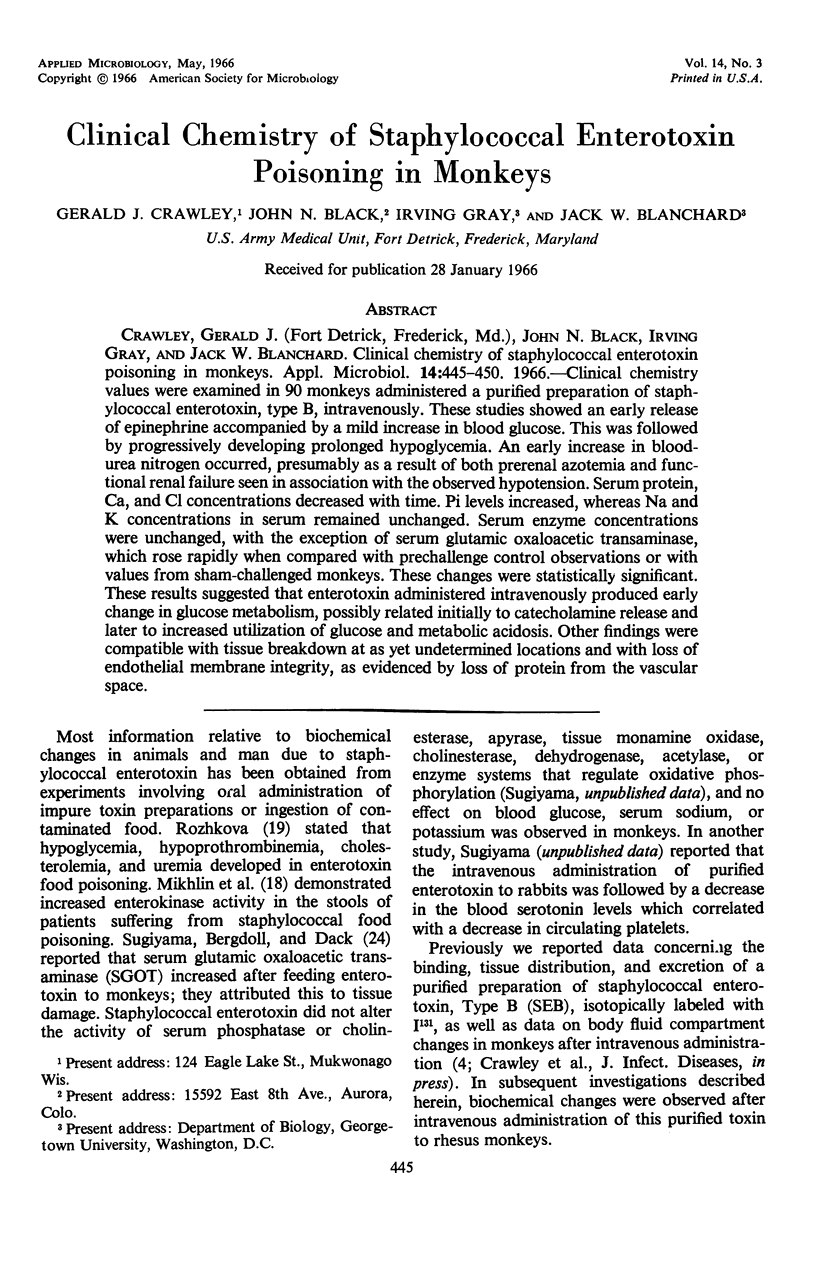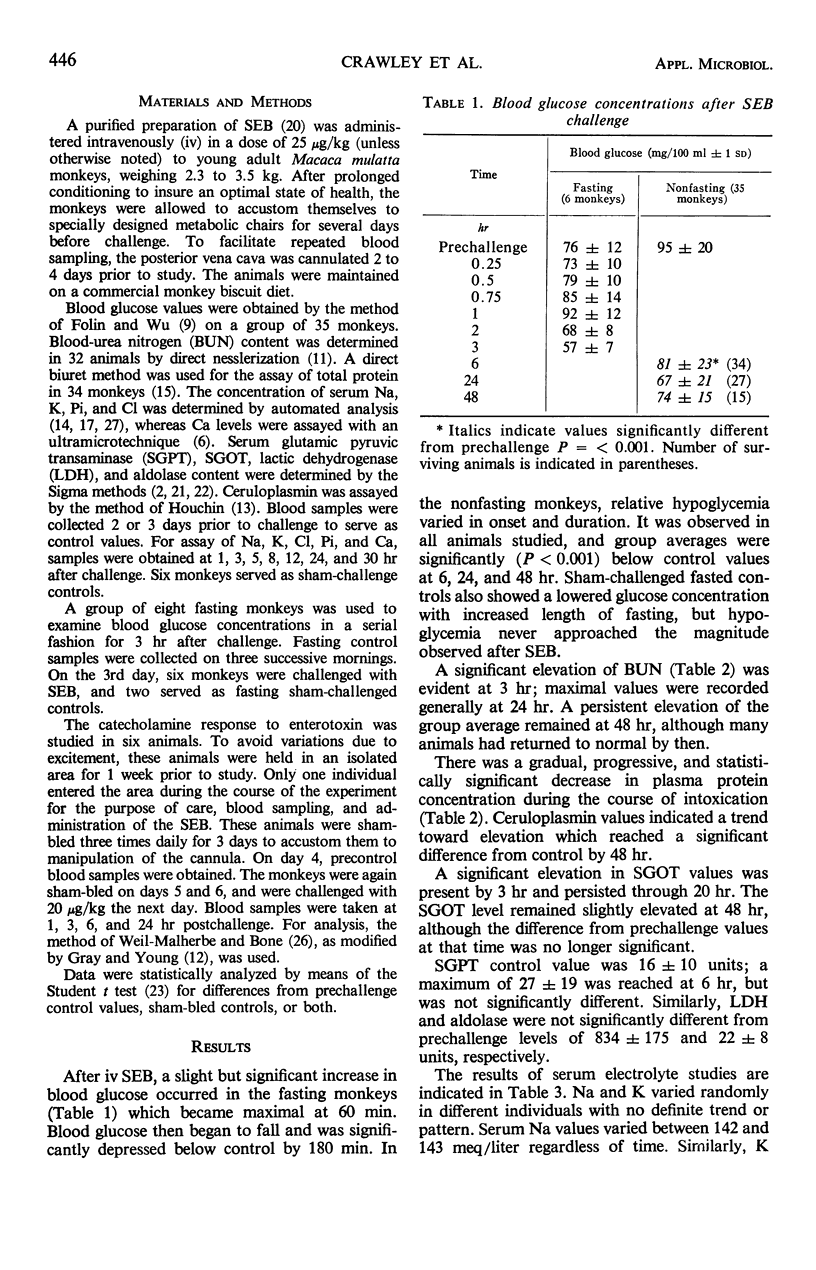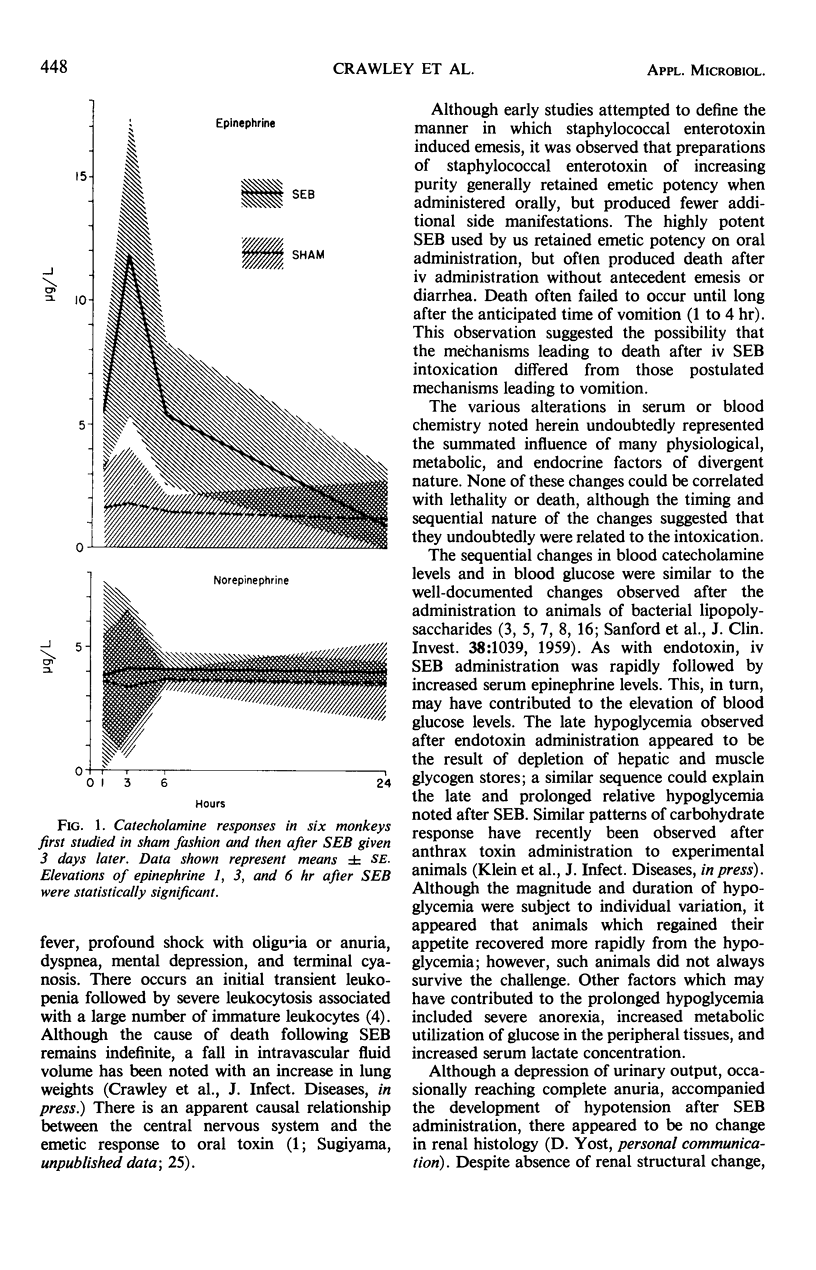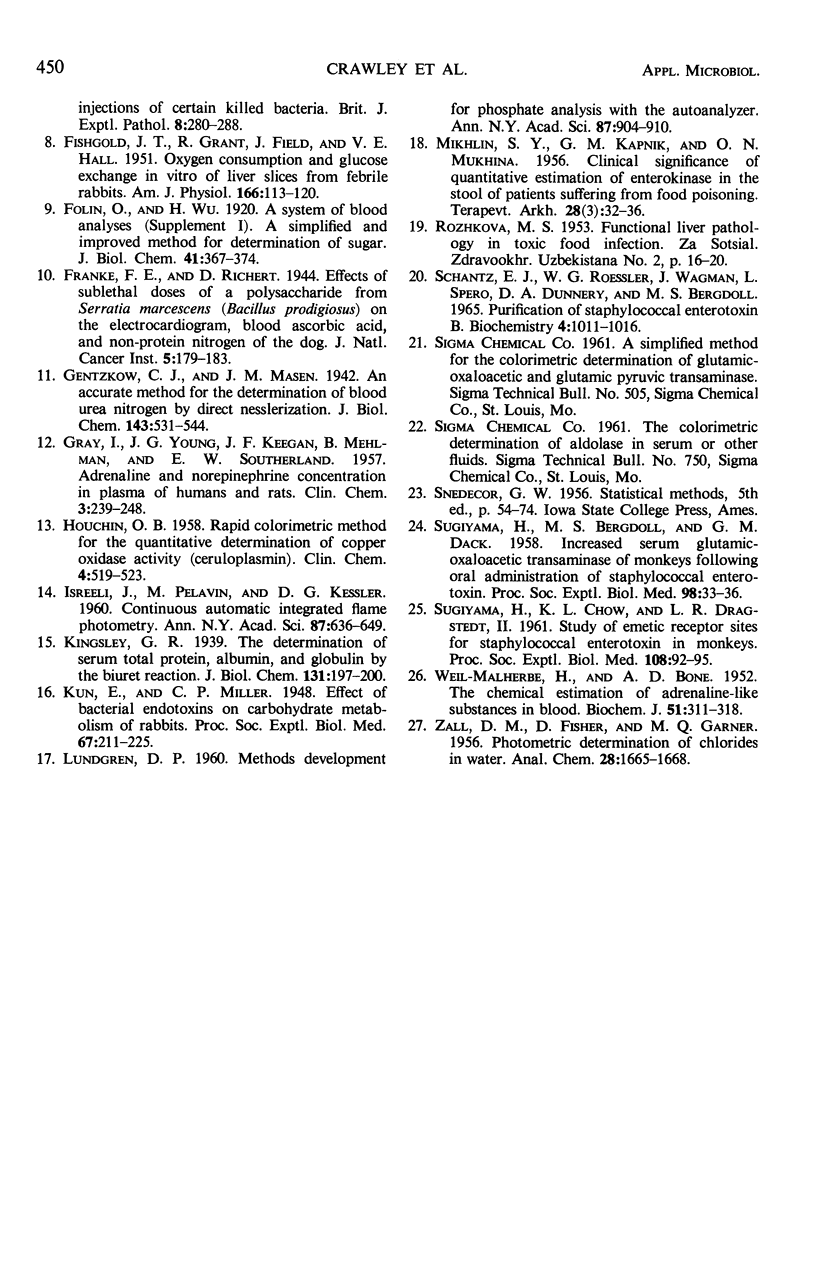Abstract
Clinical chemistry values were examined in 90 monkeys administered a purified preparation of staphylococcal enterotoxin, type B, intravenously. These studies showed an early release of epinephrine accompanied by a mild increase in blood glucose. This was followed by progressively developing prolonged hypoglycemia. An early increase in bloodurea nitrogen occurred, presumably as a result of both prerenal azotemia and functional renal failure seen in association with the observed hypotension. Serum protein, Ca, and Cl concentrations decreased with time. Pi levels increased, whereas Na and K concentrations in serum remained unchanged. Serum enzyme concentrations were unchanged, with the exception of serum glutamic oxaloacetic transaminase, which rose rapidly when compared with prechallenge control observations or with values from sham-challenged monkeys. These changes were statistically significant. These results suggested that enterotoxin administered intravenously produced early change in glucose metabolism, possibly related initially to catecholamine release and later to increased utilization of glucose and metabolic acidosis. Other findings were compatible with tissue breakdown at as yet undetermined locations and with loss of endothelial membrane integrity, as evidenced by loss of protein from the vascular space.
Full text
PDF





Images in this article
Selected References
These references are in PubMed. This may not be the complete list of references from this article.
- BERRY L. J., SMYTHE D. S., YOUNG L. G. Effects of bacterial endotoxin on metabolism. I. Carbohydrate depletion and the protective role of cortisone. J Exp Med. 1959 Sep 1;110:389–405. doi: 10.1084/jem.110.3.389. [DOI] [PMC free article] [PubMed] [Google Scholar]
- FISHGOLD J. T., GRANT R., FIELD J., HALL V. E. Oxygen consumption and glucose exchange in vitro of liver slices from febrile rabbits. Am J Physiol. 1951 Jul;166(1):113–120. doi: 10.1152/ajplegacy.1951.166.1.113. [DOI] [PubMed] [Google Scholar]
- HOUCHIN O. B. A rapid colorimetric method for the quantitative determination of copper oxidase activity (ceruloplasmin). Clin Chem. 1958 Dec;4(6):519–523. [PubMed] [Google Scholar]
- LUNDGREN D. P. Methods development for phosphate analysis with the autoanalyzer. Ann N Y Acad Sci. 1960 Jul 22;87:904–910. doi: 10.1111/j.1749-6632.1960.tb23249.x. [DOI] [PubMed] [Google Scholar]
- MIKHLIN S. Ia, KAPNIK G. M., MUKHINA O. N. Klinicheskoe znachenie kolichestven nogo opredeleniia enterokinazy v kale bol'nykh pishchevoi toksikoinfektsiei. Ter Arkh. 1956;28(3):32–36. [PubMed] [Google Scholar]
- SUGIYAMA H., BERGDOLL M. S., DACK G. M. Increased serum glutamic-oxalacetic transaminase of monkeys following oral administration of staphylococcal enterotoxin. Proc Soc Exp Biol Med. 1958 May;98(1):33–36. doi: 10.3181/00379727-98-23931. [DOI] [PubMed] [Google Scholar]
- SUGIYAMA H., CHOW K. L., DRAGSTEDT L. R., 2nd Study of emetic receptor sites for staphylococcal enterotoxin in monkeys. Proc Soc Exp Biol Med. 1961 Oct;108:92–95. doi: 10.3181/00379727-108-26855. [DOI] [PubMed] [Google Scholar]
- Schantz E. J., Roessler W. G., Wagman J., Spero L., Dunnery D. A., Bergdoll M. S. Purification of staphylococcal enterotoxin B. Biochemistry. 1965 Jun;4(6):1011–1016. doi: 10.1021/bi00882a005. [DOI] [PubMed] [Google Scholar]
- WEIL-MALHERBE H., BONE A. D. The chemical estimation of adrenaline-like substances in blood. Biochem J. 1952 Jun;51(3):311–318. doi: 10.1042/bj0510311. [DOI] [PMC free article] [PubMed] [Google Scholar]



